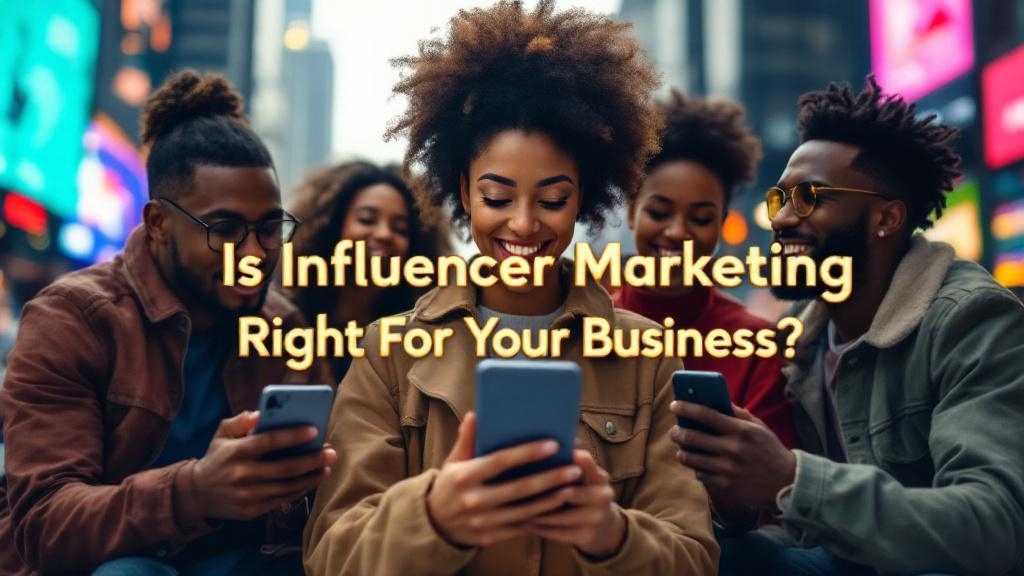What Is Influencer Marketing? (And Why It Matters for Your Brand)

Influencer marketing has exploded in popularity over the last decade, but what exactly is it, and why are so many brands harnessing its potential? With millions of consumers turning to social media for recommendations, influencer marketing has become a powerful bridge between businesses and their target audience.
What Is Influencer Marketing?

Influencer marketing is a type of social media marketing where brands work with leading individuals who have large numbers of their own followers. As such they wield considerable influence over specific online areas. These individuals, whom investigators have dubbed ‘influencers’, use their platform for pushing products or services to their readers in a natural and persuasive way.
Unlike traditional advertising, which depends on brand promotion, all offluencer marketing relies on trust. When influencers endorse a product, it is often equivalent to a personal recommendation from friend instead of just another ad. And ads like this are usually believed more easily.
Key Characteristics of Influencer Marketing:
- Authenticity: Influencers often emphasize authenticity, sharing products they genuinely believe in or use.
- Trust and Credibility: Followers often view influencers as relatable role models, making them more likely to trust their recommendations.
- Niche Audiences: Influencers typically cater to a targeted demographic, helping brands connect with specific market segments.
- Platform Integration: From Instagram Stories to YouTube videos to TikTok dances, influencer content aligns seamlessly with the platforms their audiences use most.
The Numbers Speak for Themselves
Statistically, influencer marketing has proven its effectiveness:
- Businesses earn an average of $5.20 for every $1 spent on influencer marketing, according to the Influencer Marketing Hub.
- Nearly 90% of marketers say that influencer marketing provides a greater return on investment (ROI) compared to traditional marketing.
Types of Influencers
While influencers are often associated with massive followings, not every influencer needs to have millions of followers. Different types of influencers cater to unique objectives:
1. Mega-Influencers
- Follower Range: 1M+
- Key Traits: Mega-influencers are often celebrities or social media icons with global reach.
- Best For: Building brand awareness on a large scale.
Example: Kylie Jenner, with over 400 million Instagram followers, collaborates with luxury beauty and fashion brands to skyrocket their visibility.
2. Macro-Influencers
- Follower Range: 100K–1M
- Key Traits: These influencers maintain high engagement and cater to large, but slightly more targeted niches.
- Best For: Increasing brand visibility and engagement.
3. Micro-Influencers
- Follower Range: 10K–100K
- Key Traits: Known for their expertise in specific niches, such as fitness, beauty, or tech.
- Best For: Building trust and connecting with niche audiences.
Example: A fitness guru with 35K followers may endorse protein powders to a highly engaged audience that trusts their expertise.
4. Nano-Influencers
- Follower Range: 1K–10K
- Key Traits: Nano-influencers often have the closest relationships with their followers, which leads to greater trust.
- Best For: Local or niche-focused campaigns with small budgets.
Example: A local food blogger with 5K followers posting restaurant reviews and partnering with small businesses in the area.
How Does Influencer Marketing Work?
Influencer marketing follows a structured process that ensures brands effectively partner with the right influencers while achieving measurable results:
Step 1: Define Your Goals
Start by asking yourself what you want to accomplish with influencer marketing:
- Are you looking to increase brand awareness?
- Drive product sales?
- Grow your social media following?
Step 2: Identify the Right Influencer
Picking the right influencer involves more than just follower count. Consider:
- Relevance: Do their values and content align with your brand?
- Engagement: How actively does their audience interact with their posts?
- Target Audience: Is their audience demographic a match for your product?
Step 3: Craft a Partnership
Once you narrow down your influencer list, collaborate to determine:
- Type of content they’ll create (posts, stories, videos, etc.).
- Campaign messaging and goals.
- Compensation, whether it’s monetary payment, free products, or commission-based.
Step 4: Monitor and Measure Results
Track the campaign’s performance using key performance indicators (KPIs) such as:
- Engagement rate (likes, comments, shares).
- Reach and impressions.
- Conversions (link clicks, sales, sign-ups).
Why Influencer Marketing Is Effective for Businesses
Influencer marketing works because it taps into human behavior—we trust recommendations from people we admire. Here are some reasons why businesses should consider implementing this strategy:
1. Builds Trust and Credibility
Consumers are more likely to trust influencers due to their perceived authenticity. Instead of feeling like a hard sell, influencer endorsements feel like honest recommendations.
2. Reaches Targeted Audiences
With influencer marketing, you can focus on niche demographics to ensure your campaigns resonate with the right people.
3. Boosts Engagement
Influencers know how to create content that grabs attention. Videos, Stories, and interactive content (think polls or Q&A sessions) drive higher engagement than standard ads.
4. Cost-Efficiency
Compared to traditional marketing campaigns, influencer partnerships can deliver strong results with a comparatively smaller budget, especially with micro- and nano-influencers.
5. Generates High ROI
With a proven ROI of over $5 for every $1 spent, influencer marketing is quickly becoming a cost-effective solution for growth.
Common Mistakes to Avoid in Influencer Marketing
While influencer partnerships can be lucrative, pitfalls exist. Avoid these common mistakes:
- Focusing solely on follower count instead of engagement.
- Partnering with influencers whose values misalign with your brand.
- Overlooking clear contracts detailing content requirements and deliverables.
- Failing to track and analyze the campaign’s performance metrics.
Is Influencer Marketing Right for Your Business?

Before jumping into influencer marketing, ask yourself:
- Do I know my target audience and where they consume content?
- Can I align my brand values with an influencer’s messaging?
- Do I have a specific goal and budget dedicated to the campaign?
If you answered “yes” to these questions, then influencer marketing could be a valuable strategy to grow your business.
A Final Word on Leveraging Influencer Marketing
Influencer marketing is no longer just a fad. It is a strategy that has been proven time and again with data analytics. Companies can use it to further extend their reach and influence, so without question: influencers are a vital connection point to the audiences you want to reach most. On another scale altogether: influencer marketing might include any of media and integrated marketing PlanPartner up with one, it’s time for influencer marketing to come into full bloom. Start to build some new potential partnerships this moment. Need a hand? Please do contact us; we can help ensure your message gets heard and drives results.





